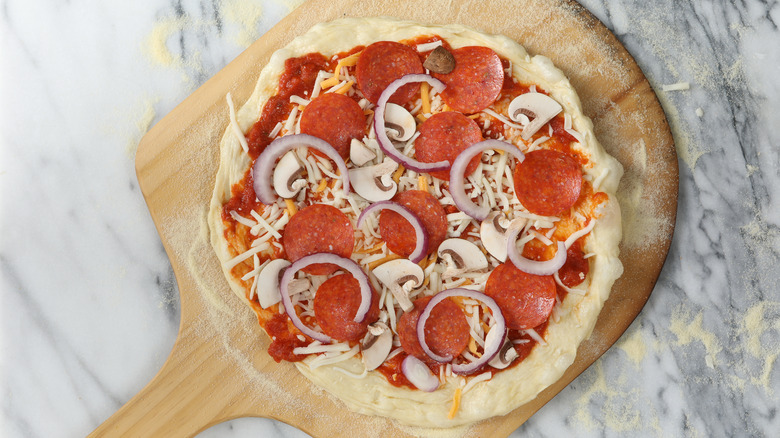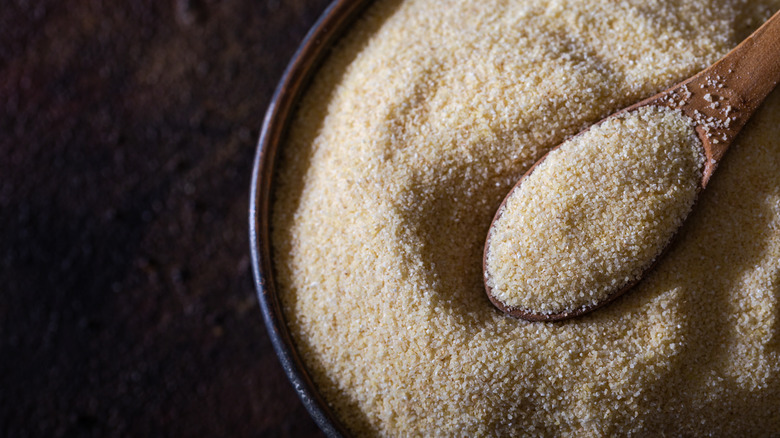The Foolproof Flour To Keep Homemade Pizza From Sticking To The Pan
Pizza dough is usually a simple mixture using wheat flour, but sometimes it needs help from another type of flour to stop it from sticking to the pan. Homemade pizza is always a good idea, but that sticky, hard-to-handle dough doesn't always want to cooperate in making your idea a reality.
Getting a perfect crust means sliding your pie directly onto a hot surface (like a baking stone) — a tricky maneuver made more difficult by a wet dough that wants to cling to everything. Every pizza chef has struggled with seeing their perfect round of cheese, sauce, and dough tear into an ugly mess, but that also means they have been forced to find a solution to the ever-present problem — and it comes in the form of a flour called semolina.
In general, a dusting of flour is always going to help with your sticky dough, whether you're kneading it on the counter or baking it in a pan, but semolina is coarse enough that it can even keep something as wet as pizza dough from clinging to your peel or pan. Simply toss a light dusting of semolina on whatever tool you are using to move your pizza to the oven, and the pie should slide off much more easily during that fateful, heart-pounding moment of release.
Just don't take too long to move your pizza once it's on your peel; even with the addition of semolina flour, the longer it sits in place, the more likely it's going to stick.
Semolina keeps pizza from sticking
Semolina is a light yellow durum wheat-based flour that's popular in Italy and the Middle East. Its most common use is for making dried pasta, hence its widespread availability in the birthplace of pizza.
The reason why it works so well with helping dough slide is because, like cornmeal, it has a more coarsely ground texture. That texture leads it to create more separation between the dough and flat surfaces, and also allow the pizza to "roll" over it as if it were tiny grain balls. Regular wheat flour can prevent sticking too, but its finer texture means it's absorbed quickly by the wet dough, so sliding doesn't happen as readily.
Semolina is pretty easy to find in grocery stores these days. Plus, it's available to purchase online from flour companies. If you can't find semolina, cornmeal is a good substitute, but it does tend to be more coarse than semolina. That can interfere with the crust's texture if some cornmeal clings to the bottom, and makes it more likely to burn in the oven.
Whether you are sprinkling semolina or cornmeal, try to have a light hand, as you don't want to transfer too much of either raw grain with the pizza. With just enough semolina, the uncooked pizza should be able to freely slide on the pan even before you put it in the oven. Use it well, and fears of tearing your homemade pie should slide right out of your mind.

